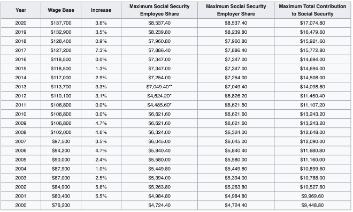Education Credits: Questions and Answers Internal Revenue Service
Content

Find out more about these tax credits and how you may benefit from them. It is any college, university, vocational school, or other post-secondary educational institution eligible to participate in a Federal student aid program run by the U.S. This includes most accredited public, nonprofit and privately-owned–for-profit post-secondary institutions. It is a tax credit of up to $2,500 of the cost of tuition, certain required fees and course materials needed for attendance and paid during the tax year. Also, 40 percent of the credit for which you qualify that is more than the tax you owe (up to $1,000) can be refunded to you. Funds used to pay room & board, travel, and non-required equipment and supplies are also taxable.
- These qualities make the LLC more appealing if you are not an undergraduate, attending college part time, or taking career development courses.
- Any scholarships, fellowships, and grants you received in the prior calendar year will be listed in Box 5.
- Small Business Small business tax prep File yourself or with a small business certified tax professional.
For Tax Year 2022, the limit on modified adjusted gross income is $160,000 if married filing jointly and $80,000 if single, head of household, or qualifying widow. You can receive a reduced credit if your income is between $80,000 – $90,000 or $160,000 – $180,000. These income limits are unchanged from 2021. Receipt of a 1098-T form does not establish eligibility for certain educational tax credits.
Q13. What is “modified adjusted gross income” for the purpose of the AOTC?
Eligible educational institutions are required to issue students Form 1098-T, Tuition Statement . You can claim AOTC, for any semester or other academic period if you take at least half the full-time course load for the first four years of college. No, but the Protecting Americans Against Tax Hikes Act of 2015 made AOTC permanent. The AOTC helps defray the cost of higher education expenses for tuition, certain fees and course materials for four years. In Box 1 as amounts paid or if your school reported the amount you were charged for qualified expenses in Box 2, please send us copies of paid receipts, cancelled checks or other documents as proof.
For 2009 and 2010, The deduction is for 50 percent of the costs paid per dependent, limited to $5,000. Loan must have been used to pay for tuition and/or other higher education expenses, which may include fees, room & board, books, supplies, or equipment. This credit is figured on the basis of one credit per tax return, regardless of how many dependent students are involved. You pay qualified education expenses of higher education. Your 1098-T form is available online through MyUW.
Am I eligible for a tax credit?
The credit is available for any and all years of post-secondary education as well as for adult and continuing education courses. There is no limit on how many years you can claim the credit. 100% Accurate Calculations Guarantee – Business Returns.

You’re ineligible for the tuition and fees deduction if you and your spouse are filing separate tax returns or you were a nonresident alien for part of the tax year. You can’t claim the tax break if your income is higher than a certain threshold either. If your modified adjusted gross income is above $80,000 (or above $160,000 for joint filers), you can’t qualify for the deduction. Note also that this is an above-the-line deduction.
Tax benefits
Take advantage of federal education benefits and New York State education benefits. You or your parents will need your 1098-T form to get these credits. If your parents paid your tuition, you may still be able to claim the American Opportunity Credit. However, you must meet the eligibility requirements for the AOTC and your parents cannot have claimed you as a dependent.
- The maximum credit for the American Opportunity Tax Credit and Lifetime Learning Tax Credit is $2,500 and $2,000 respectively.
- With rising costs of tuition, college students are always looking for ways to save money both on their income tax return and on general daily expenses.
- You can receive a reduced credit if your income is between $80,000 – $90,000 or $160,000 – $180,000.
- This is a chart of examples of Qualified Expenses vs. Not-Qualified Expenses for your reference.
You can elect one of the credits below per student per tax year. Check with the IRS or a tax advisor for additional information or if you have questions. If your award covers both tuition and room & board, the amount you use for tuition is tax-free, Education Or Student Tax Credits You Can Get On Your Tax Return while the amount you use for room & board is taxable. Scholarship and fellowship recipients should retain fee statements, textbook receipts, and similar records to support their calculations of the non-taxable and taxable portions of their awards.
You aren’t required to file if your income is under $12,550 for tax year 2021, but you may be able to take advantage of those credits and deductions we mentioned. Set a deadline for when you’ll have your W-2 forms, 1099 forms, investment income information, last year’s tax refund, student loan interest and the rest of the items listed on the IRS Tax Form checklist. By breaking the intimidating task of filing your taxes into smaller chunks, you have a better chance of avoiding a last-minute marathon session to meet the filing deadline. If you provide more than half of your own financial support , you can claim deductions or tax credits for your own education. In addition to college tax credits and deductions, there are other ways to help offset taxes when paying for higher education.
But still, the LLC is helpful because parents and students can claim the credit if they’re paying for an undergraduate education, graduate school or technical school. Plus, there’s https://quick-bookkeeping.net/ no rule saying that it can only be claimed for a certain number of years. Yes, your parents can claim an education tax credit for both children, but only one credit per student.

